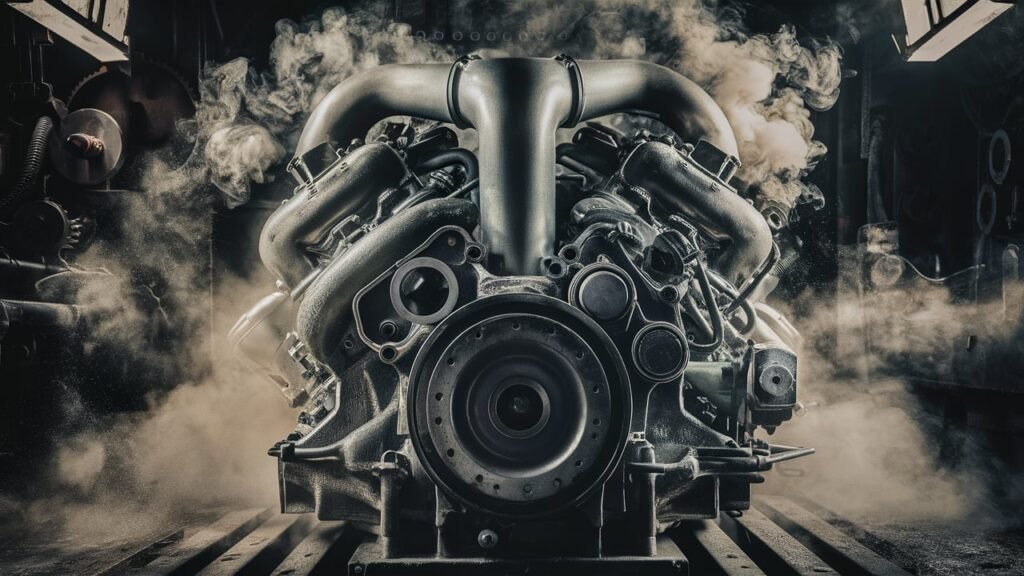
Unveiling the Mechanics of Car Engine Brake Fluid
Brake fluid is a crucial component of a vehicle’s hydraulic braking system, playing a vital role in ensuring safe and effective braking performance. Here’s a detailed overview of the mechanics of car engine brake fluid:
What is Brake Fluid?
Brake fluid is a specialized type of fluid used in the hydraulic braking systems of vehicles, including cars, trucks, motorcycles, and bicycles. It is designed to transmit the force applied to the brake pedal to the braking components, such as brake calipers or wheel cylinders, which then exert pressure on the brake pads or brake shoes to slow down or stop the vehicle.
Purpose of Brake Fluid
Brake fluid serves several critical functions:
- Heat Dissipation: Brake fluid helps dissipate heat generated during braking, maintaining consistent hydraulic pressure for immediate brake response
. Hydraulic Pressure: Brake fluid creates pressure in the brake lines, which is then transmitted to the brake calipers to slow down or stop the vehicle. Lubrication: Brake fluid provides lubrication within the braking system, preventing corrosion and rust. Moisture Absorption: Brake fluid absorbs moisture from the air, which can degrade its performance over time.
Types of Brake Fluid.
There are different types of brake fluid, including:
- Glycol-based brake fluids: These are commonly used in most modern cars and are labeled using the DOT (Department of Transportation) system (e.g., DOT-3, DOT-4, DOT-5.1)
Mineral oil-based brake fluids: These are used in vehicles with centralized brake systems and clutches, labeled as LHM (Liquide Hydraulique de Moteur) or LHM fluids.
Maintenance and Replacement.
Regular maintenance and replacement of brake fluid are essential to ensure the proper functioning of the braking system:
- Brake Fluid Checks: Check the brake fluid level regularly and replace it at recommended intervals (usually every 30,000 miles) to maintain brake efficiency.
Brake Fluid Deterioration: Brake fluid can degrade over time due to contamination, moisture absorption, and degradation. This can affect its performance and effectiveness in hydraulic systems.
Safety Considerations.
Driving with faulty brakes can be dangerous. If you notice any of the following signs, it is recommended to have your brakes inspected and maintained:
- Soft Brake Pedal: A soft brake pedal can indicate a leak in the system.
Rapid Changes in Braking: Unusual changes in braking performance can be a sign of a leak or other issue.
In summary, brake fluid is a critical component of a vehicle’s braking system, responsible for transmitting force, dissipating heat, and providing lubrication. Regular maintenance and replacement of brake fluid are essential to ensure safe and effective braking performance.
Within the intricate network of components that make up a car’s engine system, brake fluid stands as a critical yet often overlooked element. Its significance lies in its ability to transmit force efficiently within the hydraulic brake system, ultimately translating the driver’s command into responsive braking action.
Understanding the mechanics of brake fluid transcends mere curiosity; it becomes a cornerstone for ensuring both regular maintenance and overall safety on the road.

Delving into the realm of brake fluid unveils a tapestry woven with precision and functionality. With an arsenal of technical knowledge at hand, automotive enthusiasts, amateur mechanics, and conscientious car owners can unlock the secrets behind this seemingly ordinary liquid’s extraordinary role.
Embracing this understanding is not only prudent for nurturing one’s vehicular know-how but also imperative for safeguarding against potential hazards lurking beneath the surface of everyday driving experiences.
Join us on this enlightening journey as we demystify the mechanics of car engine brake fluid, arming you with insights essential for optimizing performance and security in your automotive endeavors.
Properties of Brake Fluid.
Brake fluid, often referred to as hydraulic fluid, plays a crucial role in a vehicle’s braking system. It is a type of non-compressive liquid that transmits force from the brake pedal to the brake components at the wheels.
Composed primarily of glycol-ether compounds or silicone-based fluids, it is designed to have specific properties that ensure optimal performance under varying conditions. Understanding the composition and characteristics of brake fluid is essential for car owners and mechanics alike to maintain safe driving conditions.
In the market, different types of brake fluids are available, classified based on their chemical composition. The most common variants include DOT 3, DOT 4, and DOT 5.1. Each type has its distinct characteristics, such as viscosity and boiling point levels.
For example, while DOT 3 fluids are glycol-based and offer standard performance capabilities, DOT 5 silicone-based fluids provide more stable performance across a wider temperature range but may not mix well with other types due to inherent differences in formulations. Mechanics must be aware of these distinctions to ensure compatibility with the particular vehicle they are servicing.

One critical property of brake fluid is its boiling point. High boiling points are essential in brake fluids to prevent vapor lock during intense braking situations. When subjected to high temperatures generated by prolonged or heavy braking, low-quality brake fluids can boil and convert into gas bubbles within the system.
This transformation can lead to a phenomenon known as vapor lock, where these bubbles impede proper hydraulic pressure transmission through the system, resulting in decreased braking efficiency or complete failure—a dangerous situation for both driver and passengers.
Therefore, choosing a brake fluid with an appropriate boiling point according to your vehicle’s requirements is paramount for maintaining safety on the road.
Working Principle in the Brake System.
Brake fluid plays a pivotal role in transmitting force within a car’s braking system. When the brake pedal is pressed, hydraulic pressure is applied to the brake fluid housed within the system. This pressure transfer occurs without significant compressibility, ensuring that the force from the brake pedal is efficiently transmitted without loss of power.
The ability of brake fluid to maintain hydraulic pressure allows for calibrated control over how much force is applied to slow down or stop the vehicle. Without this hydraulic force transmission, braking efficacy would be severely compromised.
The fundamental concept behind brake fluid’s function lies in its incompressible nature. When hydraulic pressure builds up due to pressing the brake pedal, it travels through the brake lines filled with fluid uniformly. Any presence of air bubbles or contaminants within the brake fluid can disrupt this seamless flow of pressure, leading to diminished braking performance.

For instance, if air enters the system due to a leak or improper bleeding during maintenance procedures, it could result in a spongy brake pedal feel and reduced stopping power. Therefore, maintaining clean and bubble-free brake fluid is crucial for ensuring peak braking efficiency.
Imagine driving down a steep hill; as you apply your brakes, it’s not just your foot working but also a network of tightly sealed systems filled with precisely calibrated fluid at work. Every time you press on that pedal, you’re engaging a complex mechanism where every part relies on clean and effective brake fluid for optimal operation.
Understanding this intricate dance between hydraulic pressure and well-maintained brake fluid underscores not only safety but also essential knowledge for anyone wanting confident control over their vehicle’s deceleration process.
Compatibility with Different Materials.
Brake fluid is a critical component in a car’s braking system, serving as the medium to transfer force from the brake pedal to the brake calipers. Understanding the compatibility of brake fluids with various materials within the system is essential to prevent damage and ensure optimal performance.
Brake fluids interact with rubber seals, hoses, and metal components, making it crucial to choose the correct type for specific materials. For instance, using a silicone-based brake fluid in a system designed for glycol-based fluids can lead to seal degradation and potential leaks.
The importance of selecting the right brake fluid lies in preserving the integrity of system parts. Different types of brake fluids are formulated with specific additives and compositions suited for particular material compatibility. Metallic parts like master cylinders and pistons can corrode when exposed to incompatible brake fluid types.
Moreover, rubber components such as seals and hoses can swell or deteriorate when incorrect fluids are used. By adhering to manufacturer recommendations on brake fluid specifications, car owners can avoid costly repairs resulting from material incompatibility issues.

Mixing different types of brake fluids poses risks that can compromise overall braking efficiency and safety. Incompatible formulations may lead to chemical reactions that alter the fluid’s properties, causing loss of viscosity or even creating sludge build-up within the system.
This can result in reduced hydraulic pressure transmission, leading to decreased braking performance or failure. To mitigate these risks, it is imperative to flush out any remaining old fluid completely before introducing a new type during maintenance or component replacement procedures.
Maintenance and Changing Procedures.
To maintain optimal brake performance, regular inspections of brake fluid levels are crucial. Begin by consulting your vehicle’s owner manual to identify the type of brake fluid recommended by the manufacturer.
Inspecting the fluid level in the master cylinder reservoir is a straightforward process that can be done at home. Ensure the car is parked on a level surface, remove the cap from the reservoir, and visually check that the fluid level falls within the designated range. If the level is low, topping off with the correct type of brake fluid is necessary.
Changing brake fluid should generally be done every two years or as recommended by your vehicle’s maintenance schedule. Over time, brake fluid can absorb moisture, which decreases its boiling point and compromises braking efficiency.
The procedure involves draining out old fluid from all four corners of your vehicle’s braking system (front left, front right, rear left, rear right) while carefully replenishing it with fresh brake fluid. Use a bleeding kit if needed to ensure all air bubbles are removed from the system.
During any maintenance or replacement procedures involving brake fluid, safety precautions are paramount. Wearing protective eyewear and gloves is advised to prevent skin irritation or injuries from spills. Never reuse old brake fluid due to contamination risks; dispose of it properly according to local regulations.
Additionally, be cautious when working around hot components like brakes after driving as they can cause burns. By following these steps meticulously and adhering to safety guidelines, you can maintain optimal braking performance for your vehicle while ensuring safety on the road.
Signs Indicating Brake Fluid Issues.
Proper brake fluid maintenance is critical for your vehicle’s safety and performance. Recognizing common warning signs that suggest potential brake fluid issues can help you address problems promptly before they escalate. One of the most noticeable indicators of brake fluid trouble is spongy brakes.
If you find that your brake pedal feels soft or mushy when depressed, it could indicate air in the braking system due to a leak or low fluid levels. Ignoring this issue can significantly compromise your ability to stop efficiently and safely.
Leaking brake fluid is another red flag that should not be ignored. A visible puddle or wet, oily residue near the wheels or under the car may signal a leak in the brake system. Addressing leaks promptly is crucial to prevent further damage to components and ensure optimal braking performance.
Additionally, degraded or contaminated brake fluid can lead to various performance issues. Over time, moisture absorption or chemical breakdown can reduce the fluid’s effectiveness in transmitting hydraulic pressure, resulting in poor braking performance or even complete failure.

Effects on vehicle performance due to degraded or contaminated brake fluid are not limited to braking inefficiency alone; they can also impact other parts of the braking system. For instance, corrosion caused by contaminated brake fluid can damage vital components like calipers and master cylinders, leading to costly repairs.
Therefore, regular inspections and addressing any signs of brake fluid issues promptly are essential practices for maintaining your vehicle’s overall safety and functionality. Remember, staying vigilant about these warning signs ensures a smoother driving experience while keeping you safe on the road.
Conclusion: Understanding Car Engine Brake Fluid Essentials.
In summary, delving into the mechanics of brake fluid exposes its critical role in vehicle safety and performance. Comprehending its properties, working principles, compatibility considerations, maintenance procedures, and warning signs of issues equip automotive enthusiasts, amateur mechanics, and car owners with essential knowledge for maintaining optimal braking systems.
Moreover, navigating safety regulations ensures compliance with legal requirements surrounding approved brake fluids usage and promotes proper handling practices from storage to disposal. By adhering to these guidelines and comprehending the nuances of brake fluid functionality, individuals can uphold their vehicles’ braking efficiency while mitigating potential risks associated with neglect or misuse.
Understanding the complexities behind brake fluid not only enhances one’s technical acumen but also underscores the significance of meticulous care in managing this vital component of a vehicle’s operation.
As individuals grasp the nuances of brake fluid dynamics through this insightful exploration, they empower themselves to make informed decisions that safeguard both their automotive investments and personal well-being.
Ultimately, by embracing a comprehensive understanding of car engine brake fluid essentials, enthusiasts can navigate maintenance practices more adeptly while fostering an environment of enhanced safety on the roadways.




